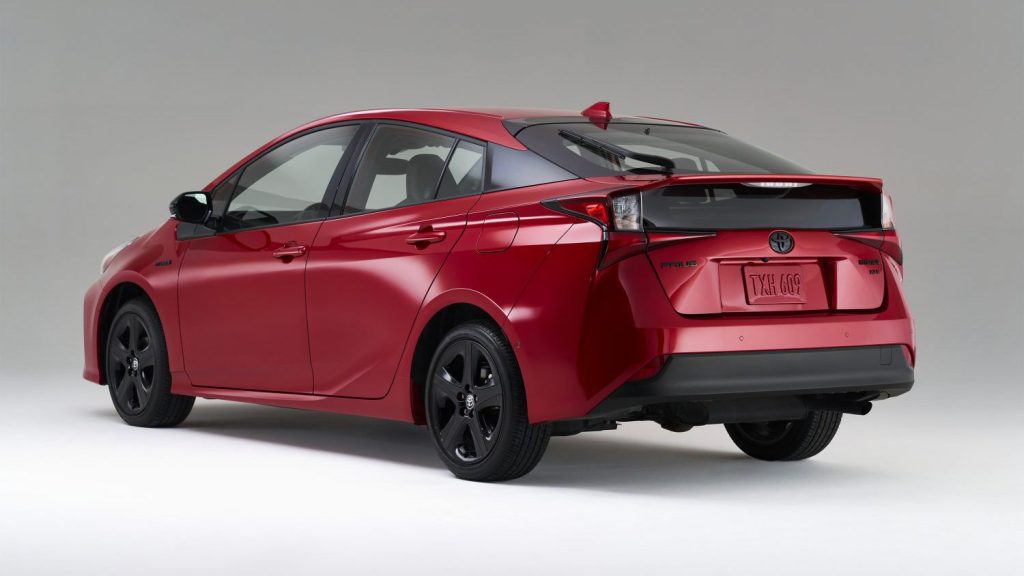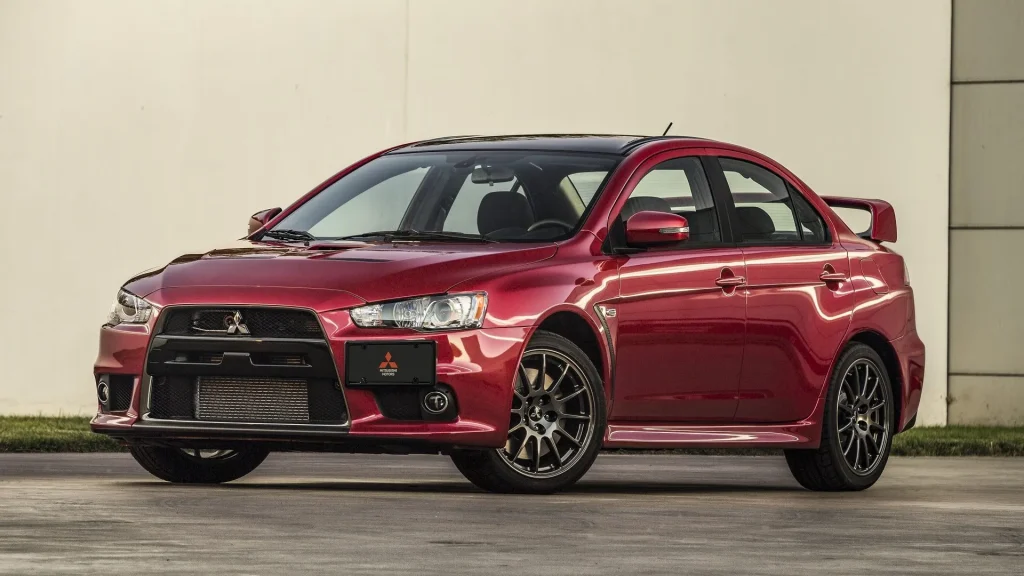If you live in a region where the summer heat becomes extreme, then you already know your car can either feel like a refreshing escape or a scorching nightmare. There’s nothing quite as uncomfortable as trying to sit in the driver’s seat, only to immediately jump up when the seat feels like a hot skillet.
In places like the desert, it’s not uncommon for drivers to lay down a towel just to sit without getting burned. And when it comes to grabbing a steering wheel that’s been roasting in the sun? Forget it—no one can safely drive like that.
On top of that, when the air conditioning takes forever to cool things down, you’re stuck waiting outside the car, draining battery and wasting time.
It’s unfortunate that we can’t just bring our cars into the air-conditioned comfort of our homes. However, there are vehicles out there equipped with special cooling features that make summer driving much more bearable.
Cars That Keep Cool in Summer
So, if you’re browsing through online car listings, don’t miss these standout models that are built to beat the heat. These vehicles are designed specifically for high-temperature environments and are packed with features to keep you comfortable, even when it feels like the pavement could melt your shoes.
With everything from high-performance A/C systems to remote climate control, these are the kinds of cars you’ll actually look forward to entering on the hottest days.
Also Read: 10 Top-Rated Hatchbacks That Drivers Enjoy Driving
Acura RDX
This upscale sport crossover is built to keep both drivers and passengers comfortable in sweltering weather, thanks to a suite of smart features.
It starts with dual climate control, allowing the driver and front passenger to independently set their preferred temperatures and direct the airflow where they want it.
But what truly sets the 2021 Acura RDX apart is what happens when you upgrade to the Technology Package.
This system uses the vehicle’s GPS receiver to communicate with satellites, assess the position of the sun in relation to your car, and automatically adjust the climate control to make the sunniest part of the cabin cooler. That’s the kind of smart tech that’s bound to impress your passengers.

And the heat-fighting features don’t stop there. The car includes a humidity monitor that senses elevated moisture levels inside the cabin, then tweaks the temperature and fan speed to prevent fogged-up windows.
Additionally, ventilated front seats provide a steady stream of air to the backs of both the driver and front passenger, offering relief on long, hot drives. It’s about as close as a car can get to offering you a chilled lemonade. And impressively, all of these premium comforts come at a reasonable price.
Mercedes-Benz E Class
The Mercedes-Benz E Class is a solid pick for drivers who not only want to stay cool but also protect their vehicle’s interior from harsh sunlight.
One of its highlights is the Mercedes User Experience system, which responds to voice commands like, “I’m too hot,” by activating the A/C to bring the temperature down. You can also ask it to locate the nearest smoothie or iced tea spot if you’re craving something extra refreshing.
Where this car really shines for summer use is with the available Sun Protection Package. This package doesn’t just help cool the cabin—it also enhances privacy.

It comes with a suite of blinds and shades that obscure the view into your car without blocking your own visibility from inside. This includes an electric roller sunblind for the rear window, manual roller blinds for the left and right rear windows, and swiveling/extending sunblinds for both the driver and front passenger.
On top of that, the E Class offers optional ventilated front seats. These are a real game changer on days when the sun is bearing down through the windshield, helping to reduce the sweat factor and boost overall comfort behind the wheel.
Kia Sorento
When you’re in the market for a large SUV that can accommodate a lot of passengers, making sure everyone stays comfortable is a top priority.
It’s one thing if one or two people are feeling the heat, but when you’ve got seven or eight passengers packed into a cabin, things can get miserable fast—especially when the interior heats up quickly.
Fortunately, the budget-friendly 2019 Kia Sorento comes equipped with dual climate control. This allows you to set your desired cabin temperature before anyone even steps inside.
Instead of standing around waiting for the car to cool down, it’ll already be at a pleasant temperature the moment you get in, so you and your passengers can hit the road without delay.
The 2025 Kia Sorento is a midsize SUV that strikes a solid balance between practicality, comfort, and technology, making it an attractive option for families and daily drivers. It comes with multiple powertrain choices to suit different needs.

The base models feature a 2.5-liter inline-4 engine producing 191 horsepower, while higher trims offer a turbocharged version pushing out 281 horsepower.
For those looking for better fuel efficiency, there’s also a hybrid version delivering 227 horsepower, and a plug-in hybrid model that produces 261 horsepower with an estimated 31 miles of electric-only range and 33 mpg combined.
Inside, the Sorento seats up to seven passengers and includes third-row seating as standard. Buyers can opt for second-row captain’s chairs for added comfort and easier access to the third row.
The cabin is designed with quality in mind, offering options like genuine leather upholstery and a premium headliner to elevate the interior feel.
On the tech front, the Sorento doesn’t disappoint. It features wireless Apple CarPlay and Android Auto, USB-C ports in all rows, and an infotainment system with a user-friendly interface. Safety features like blind-spot view monitoring, a digital rearview mirror, and a hands-free power liftgate add convenience and peace of mind.
Also Read: 10 Best and 10 Worst Cars for Cold Climates & Harsh Climate
Lexus RX
This luxury SUV is just as cool inside as it looks from the outside. With its dual-zone climate control system, both the driver and the front passenger can choose their own individual temperature preferences—no more back-and-forth over settling on a single setting. They can also independently select their fan speeds, with plenty of levels to choose from.

Adding to the comfort factor, this vehicle includes air-conditioned seats. The controls are conveniently located just above the gear shift, making them easy to find and activate.
Once turned on, the system pushes cooling air through the seats themselves, complementing the air conditioning vents that blow air directly toward passengers. It’s an ideal setup for staying refreshed on even the hottest days.
Toyota Prius
Toyota Prius models manufactured between 2010 and 2015 come with a unique solar-powered ventilation system that’s ideal for combating high heat when your car is parked. If you’re stuck parking in direct sunlight, this feature can be a game-changer.
It works by drawing in air from outside and circulating it throughout the interior while the vehicle is turned off. You activate it by pressing the solar ventilation button on the instrument panel before shutting down the engine.
Then, about ten minutes after the vehicle is powered off, the system kicks in automatically and starts moving air through the cabin. It stays on until you return to the car and press the button again.
What makes this system particularly smart is its ability to detect outside temperatures. If it’s cool out, the system won’t activate, which helps conserve energy—something Prius owners often value. It’s a thoughtful touch that makes summer driving (and parking) a bit more bearable.

The 2024 Toyota Prius represents a significant evolution in hybrid technology, combining impressive fuel efficiency with a sleek, modern design.
Under the hood, it features a 2.0-liter inline-4 hybrid engine that delivers 194 horsepower in the front-wheel-drive (FWD) model and 196 horsepower in the all-wheel-drive (AWD) variant.
This powertrain enables the Prius to achieve an estimated 0–60 mph time of 7.2 seconds, a notable improvement over previous generations.
Fuel economy remains a standout feature, with the 2024 Prius offering up to 57 mpg combined, making it one of the most efficient non-plug-in hybrids available.
The vehicle’s aerodynamic profile and lightweight construction contribute to this efficiency, while also providing a more engaging driving experience.
Cars That Are Prone To Overheating
How many times have you found yourself rubbernecking at a stranded vehicle on the side of the road, hood raised, steam pouring out from under it as the driver desperately signals for a tow truck?
Or maybe you’ve been at a local racetrack and seen a driver parked helplessly, stuck in an overheated car while waiting for a tow back to the pits.
The frustrating truth is, both of these situations could have easily been avoided with a few simple precautions to properly cool the vehicle. Heat is one of the leading threats to engine and drivetrain health, and ensuring that your engine, transmission, and differential stay cool is critical for long-term performance and reliability.
In this article, we highlight three popular vehicle platforms that are especially prone to overheating under common conditions. For each, we provide practical cooling tips and introduce some of the latest aftermarket products designed to help keep your drivetrain protected—whether you’re navigating the heat of daily driving or pushing limits at the track.
Subaru Impreza STI (GRB)
Late-model Subaru STIs, particularly those produced from 2008 to 2010, have earned a reputation for running hot in warm climates. A key contributor is the factory hood scoop design.
While upgrading from the stock top-mount intercooler to a front-mount setup helps bring down charge temperatures, it also causes airflow to bypass the front bumper’s inlet—where it should be directed through the intercooler and radiator cores—and instead flow uselessly through the empty hood scoop.
To correct this, install a block-off plate or a reverse cowl scoop to redirect airflow out of the engine bay, reducing overall engine and coolant temperatures.
Another issue with these late-model STIs is their undersized factory radiator. It’s significantly smaller than those found in older Impreza models like the ’92–’00 GC8. South Coast Subaru parts manager and track enthusiast Ferdie Eng experienced this shortcoming firsthand when he took his STI out to Buttonwillow Raceway.
After several laps, his coolant temperatures soared to 225 degrees Fahrenheit. Determined to solve the problem, Ferdie reached out to Koyo Radiators, who had just released their Hyper V Core radiator, designed specifically for the Subaru STI platform.

It’s a common misconception that simply installing a larger radiator guarantees better cooling. What really matters is the radiator’s design—specifically, its fin pitch (the number of heat-dissipating fins per inch) and efficiency (how well it transfers heat from the coolant).
The Koyo V Core’s 36mm thickness and high-density fin pitch allow it to capture more incoming air and maximize heat dissipation.
The radiator also comes pre-fitted with a 1/8-inch NPT plug on the upper end tank, making it easy to install a coolant temperature sensor without needing to cut and splice into the radiator hose.
After installing the Koyo Hyper V Core, Ferdie put the STI to the test again at Buttonwillow, this time in brutal 116-degree track conditions.
The results spoke for themselves: coolant temperatures stayed steady at 189 degrees for the duration of the session, with only a brief spike to 213 degrees—the highest recorded temperature of the day.
That’s a massive improvement and proof that the right cooling upgrades can make all the difference when it comes to protecting your engine in the heat.
Mitsubishi Lancer Evolution X MR
The EVO X MR, which comes equipped with a Twin Clutch SST (Sport Shift Transmission), features a six-speed dual-clutch automated gearbox that shares much of its core technology with the system found in the Nissan R35 GT-R.
While the EVO X’s clutches are hydraulically actuated, they’re electronically controlled by two onboard computers: the vehicle’s ECU and the dedicated Twin Clutch SST module.
For instance, during acceleration in 2nd gear, the system will pre-select 3rd gear with the clutch engaged, and the moment you “slap” the paddle, one clutch disengages while the other engages—executing an ultra-fast gear change without disrupting traction.
Despite its impressive engineering, the SST transmission has developed a reputation for overheating on the racetrack. Many SST-equipped EVO X owners have reported that after just three hot laps, the car enters limp mode.
The dashboard lights up with a “slow down” warning and a chime sounds, forcing the driver to retreat to the pits for an enforced cooldown.

Early on, frustrated EVO owners looked for solutions. A common workaround involved modifying the factory transmission cooler setup by removing the driver-side fog light to increase airflow to the stock core, then adding a puller fan to the backside of the cooler.
While this helped marginally, the factory cooler was already working at its limit, and the fix proved insufficient for serious track duty.
Greddy addressed this issue with its V-mount dual cooler kit, which supplements the stock cooler with an additional Greddy core. The Circuit Spec Trans Cooler uses an aluminum shroud to funnel airflow across both cores efficiently, while an in-line electric oil pump increases oil flow, helping eliminate retained heat.
During Greddy’s rigorous track testing at Japan’s Tsukuba Circuit, the factory cooler alone was unable to keep up—within just 16 minutes, transmission temperatures hit 140°C (284°F), sending the car into safe mode.
In contrast, the Greddy V-mount system delivered significant gains in cooling. After just nine minutes of track time, transmission temps were already 17°C (62.6°F) cooler than stock.
At the 16-minute mark, the difference widened to an impressive 39°C (70.2°F), clearly demonstrating the kit’s effectiveness under race conditions.
Honda Civic
From the factory, Honda equipped the Civic with a lightweight, cost-effective radiator composed of plastic end tanks and a mix of aluminum, copper, and brass.
It works well in standard daily driving, keeping the engine within ideal temperature ranges. But over time, contaminants like dirt, corrosion, and rubber particles from deteriorating hoses can clog the system, reduce efficiency, and ultimately lead to overheating.
The D-series engine in the Civic is paired with a half-width, single-core radiator that measures 16mm (5/8-inch) thick—enough to cool the 102hp DX or 125hp EX models. But once engine swaps or turbo setups enter the picture, the stock radiator becomes a weak point.
On the track, these cooling limitations can quickly turn dangerous. Inability to shed heat fast enough under continuous load will cause coolant temps to spike, increasing the risk of engine failure.
Some owners choose to keep the half-width radiator for weight savings, lower cost, or space constraints for turbo piping or equal-length headers. But stepping up to an aluminum unit like the Koyo R-Core—with its 53mm (2.08-inch) dual core—offers far better thermal management.

Its larger coolant capacity and improved heat dissipation make it ideal for track use. Koyo constructs these radiators with tubes, fins, end tanks, and brackets all brazed together in a high-tech Nocolok furnace, resulting in a strong, corrosion-resistant unit capable of withstanding vibration and debris.
Civics built for road racing demand more from their cooling systems due to the extended periods spent at high RPM and throttle. Unlike short bursts from drag racing or street driving, endurance events punish cooling systems.
For these applications, a properly engineered full-width radiator is a must. It increases coolant flow and dramatically improves efficiency, ensuring engine temps remain stable when it matters most.
Nissan R35 GT-R
When driven hard on track, the R35 GT-R is well known for overheating its twin-clutch transmission. In extreme conditions, heat forces the trans into automatic mode, locking it into Sixth gear to cool things down.
At Japan’s Fuji Speedway, HKS engineers captured transmission oil temperatures spiking between 140–145°C (284–293°F), triggering fail-safe mode. Elevated clutch temperatures also forced the system to disengage the all-wheel-drive feature, defaulting to two-wheel drive—even when oil temps had not yet exceeded 140°C.
To address this, HKS developed the DCT (Dual Clutch Transmission) Cooler Kit. The system works alongside the factory water-cooled trans cooler, significantly improving heat management during high-stress track sessions. It also provides a secondary benefit of reducing the GT-R’s overall engine coolant temperatures.

The DCT cooler core fits neatly into the car’s front left fender, housed in a custom-designed Fiber Reinforced Polymer (FRP) duct that directs airflow into the unit.
It integrates the stock heat exchanger and an HKS thermostat, plus a specialized oil outlet adapter that enables faster thermal stabilization than the stock setup. Larger -10 AN oil lines replace the restrictive factory plumbing, allowing increased oil flow and lower internal resistance.
Testing at Fuji Speedway showed that the DCT Cooler Kit reduced water temperature by an average of 5°C (41°F), enabling the GT-R to run multiple uninterrupted laps while keeping transmission oil temps stable at 127°C (260°F).
Nissan 240SX
Just like any other system under your hood, the radiator relies on supporting components to function effectively. One of the most overlooked is the factory fan shroud.
It may not be flashy, but it plays a crucial role in channeling airflow through the radiator. Contrary to some owners’ beliefs, Nissan didn’t install the shroud just to clutter the engine bay—it’s essential for keeping your engine cool.
Many 240SX owners remove the stock shroud in favor of a “cleaner” engine bay look or swap the belt-driven fan for a pair of electric fans. But these aftermarket fans often push less air than the OEM setup, and without a proper shroud, airflow becomes inefficient.

Instead of pulling air through the radiator, the fans draw air from areas of least resistance—usually within the engine bay itself—resulting in recirculated hot air and increased coolant temps.
For the cooling system to work at peak efficiency, the shroud must extend beyond the edges of the fan to direct airflow properly through the radiator core.
Unless you’ve significantly upgraded the vehicle’s cooling system, it’s best to retain the OEM plastic shroud, no matter how unattractive it may seem. In this case, form should follow function.

